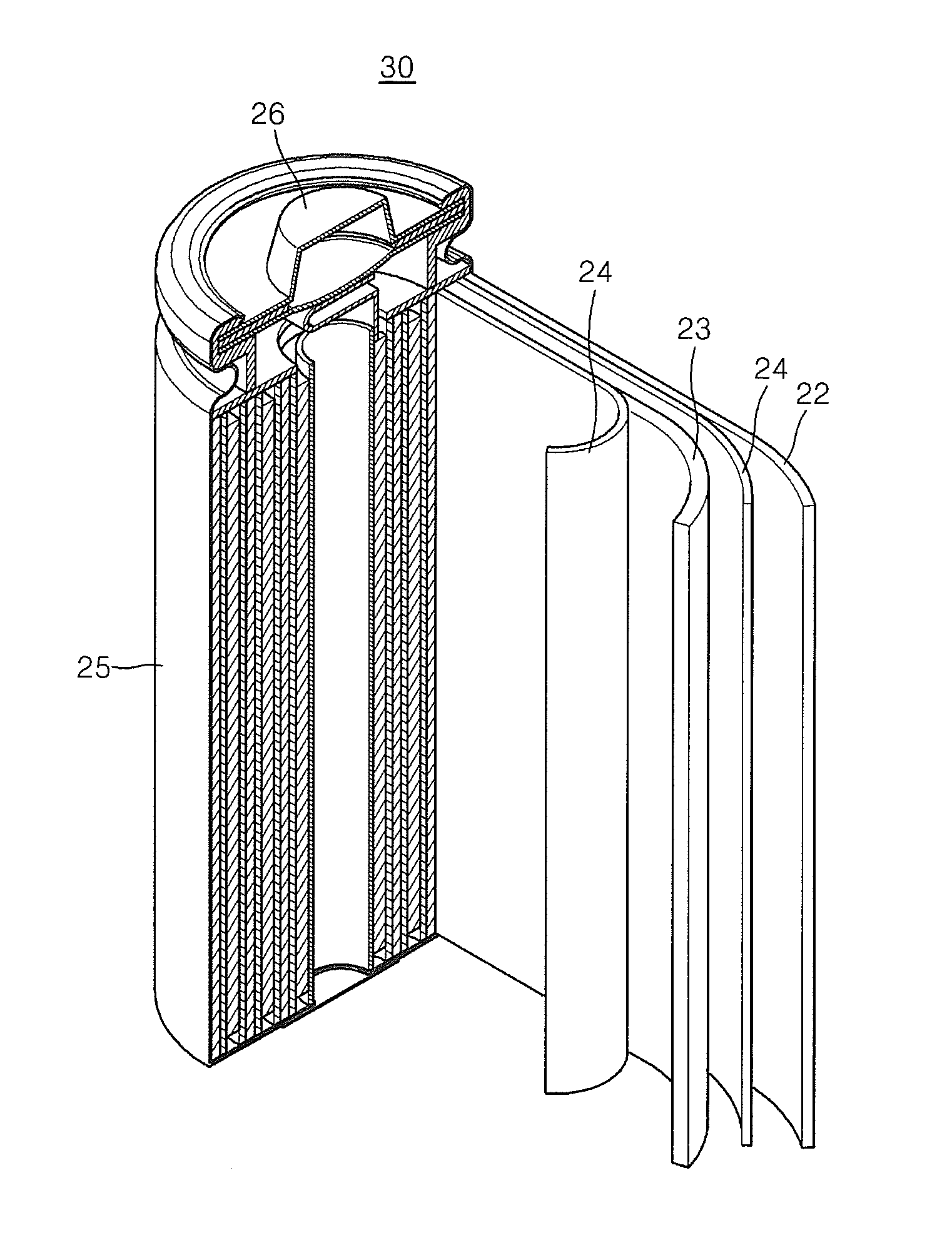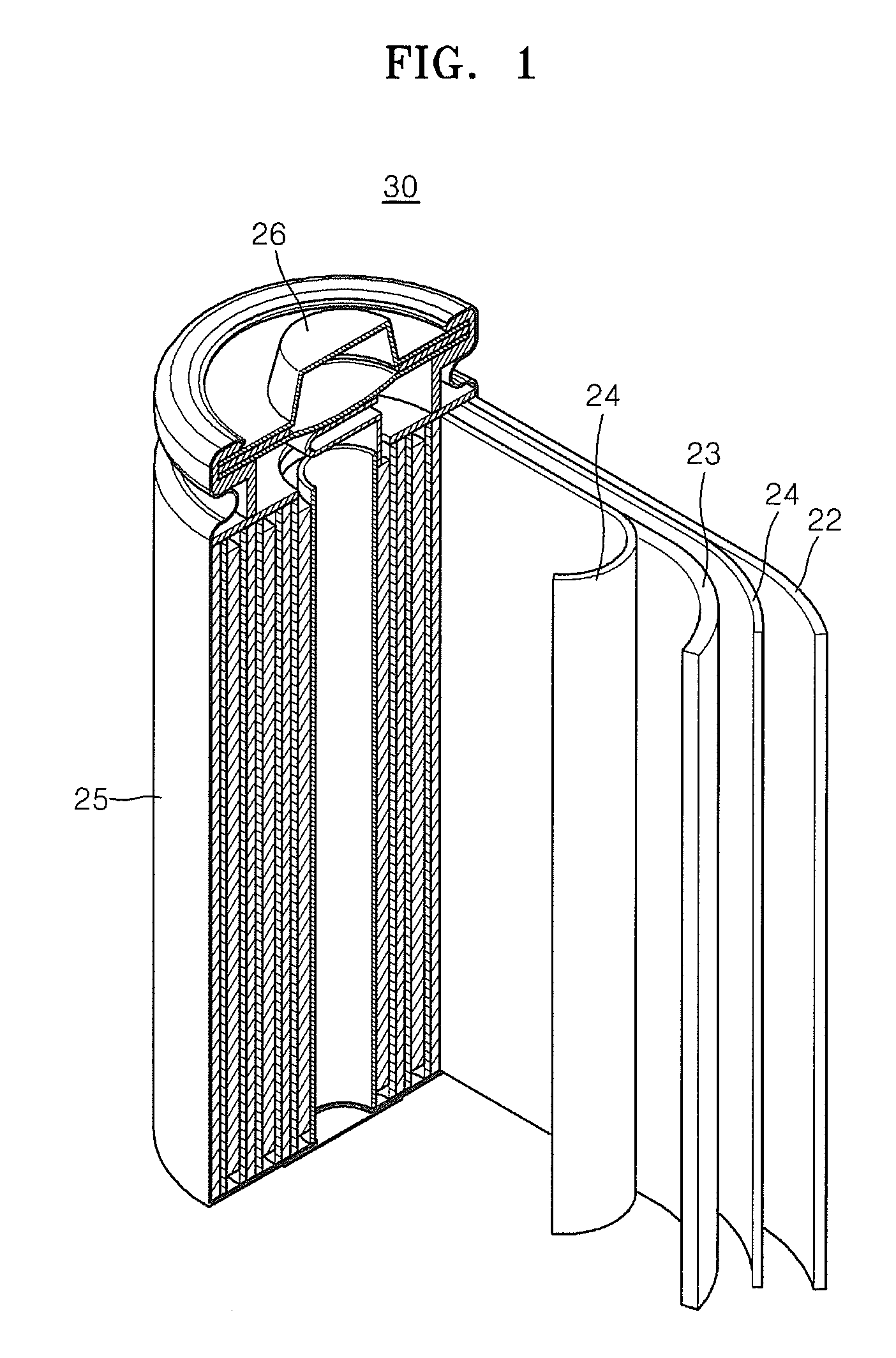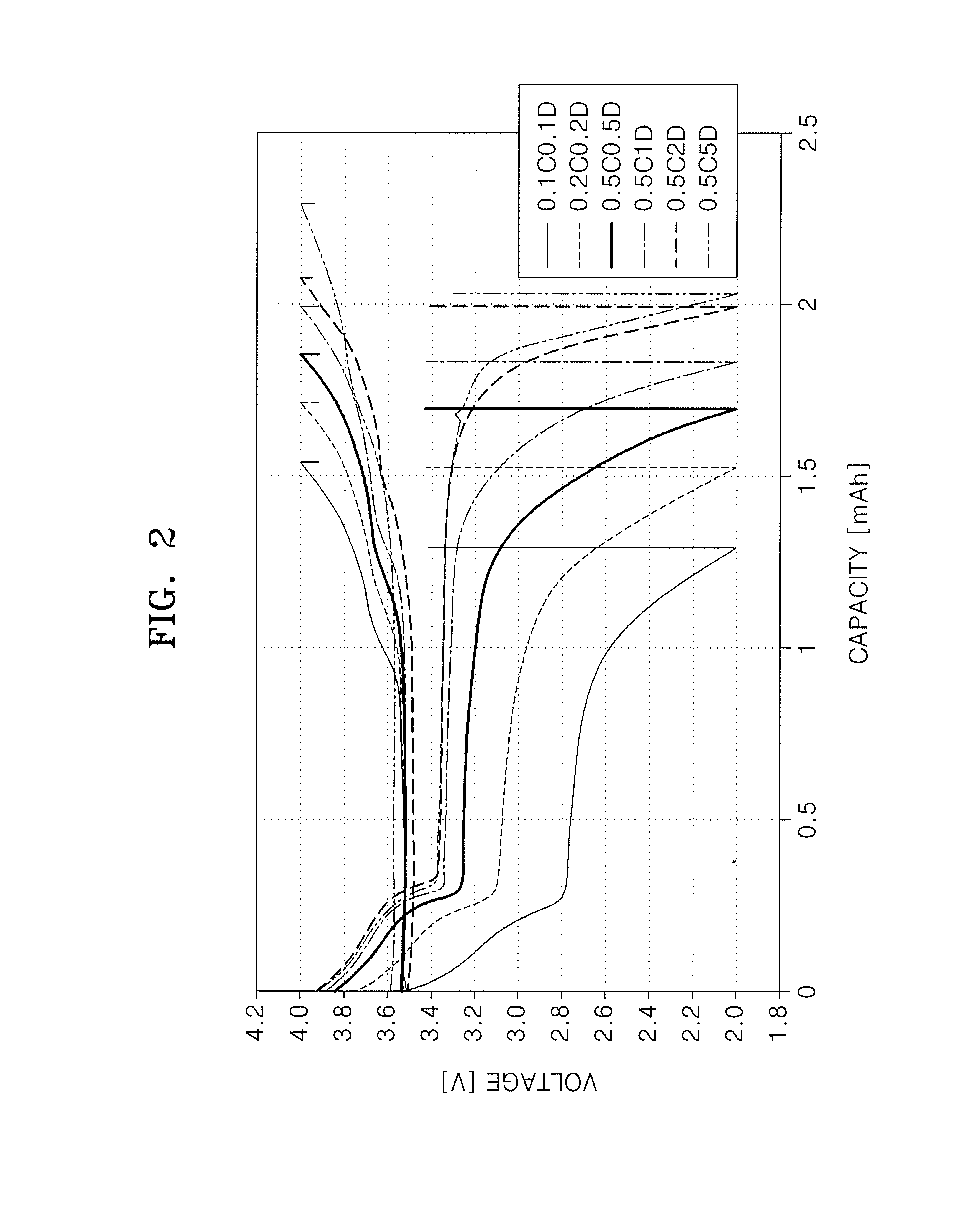Positive active material, and electrode and lithium battery containing the positive active material
a positive active material and active material technology, applied in the direction of cell components, electrochemical generators, nickel compounds, etc., can solve the problems of low density of electrodes, failure to meet stability requirements of middle to large sized lithium secondary batteries, and low thermal stability, etc., to achieve good high-rate characteristics, high electrical conductivity, and high capacity
- Summary
- Abstract
- Description
- Claims
- Application Information
AI Technical Summary
Benefits of technology
Problems solved by technology
Method used
Image
Examples
preparation example 1
Synthesis of LiFePO4
[0063]LiFePO4 was prepared by solid-phase synthesis. FeC2O4.2H2O, NH4H2PO4, and Li2CO3 were mixed in a stoichiometric ratio corresponding to LiFePO4 and milled to prepare an active material. Then, sucrose was added to the active material in an amount of 5% of the active material, and calcination was performed thereon at a temperature of 700° C. while N2 was provided at an inert atmosphere for 8 hours, thereby synthesizing LiFePO4.
preparation example 2
Synthesis of LiNi0.8Co0.15Al0.05O2
[0064]In order to prepare LiNi0.8Co0.15Al0.05O2 as an NCA positive active material, nitrate hydrates of Ni, Co, and Al (i.e., Ni(NO3)2.6H2O, Co(NO3)2.6H2O and Al(NO3)3.9H2O, respectively) were mixed at a mixture ratio corresponding to the stoichiometric ratio (Ni:Co:Al=0.8:0.15:0.05) to prepare a homogeneous solution. Ammonia water was added thereto to adjust the pH of the solution to 9 and then coprecipitation was performed thereon. Then, the precipitate was washed and dried at a temperature of 150° C. for 6 hours. Then, Li2CO3 was mixed with the resulting product in an amount corresponding to the mole ratio described above, and then the mixture was milled and sintered at a temperature of 750° C. for 12 hours, thereby completing synthesis of LiNi0.8Co0.15Al0.05O2.
preparation example 3
Synthesis of LiNi0.6Co0.2Mn0.2O2
[0065]In order to prepare LiNi0.6Co0.2Mn0.2O2 as an NCM positive active material, nitrate hydrates of Ni, Co, and Mn (i.e., Ni(NO3)2.6H20, Co(NO3)2.6H20 and Mn(NO3)2.6H2O, respectively) were mixed in a mixture ratio corresponding to the stoichiometric ratio (Ni:Co:Mn=0.6:0.2:0.2) to prepare a homogeneous solution. Ammonia water was added thereto to adjust the pH of the solution to 10 and then coprecipitation was performed thereon. Then, the precipitate was washed and dried at a temperature of 150° C. for 6 hours. Then, Li2CO3 was mixed with the resulting product in an amount corresponding to the mole ratio described above, and then the mixture was milled and sintered at a temperature of 870° C. for 20 hours, thereby completing synthesis of LiNi0.6Co0.2Mn0.2O2.
[0066]Particle distributions of the positive active materials prepared according to Preparation Examples 1 to 3 were measured, and the results are shown in Table 1 below.
TABLE 1Positive activema...
PUM
| Property | Measurement | Unit |
|---|---|---|
| average particle diameter | aaaaa | aaaaa |
| agglomerated particle diameter | aaaaa | aaaaa |
| particle size | aaaaa | aaaaa |
Abstract
Description
Claims
Application Information
 Login to View More
Login to View More - R&D
- Intellectual Property
- Life Sciences
- Materials
- Tech Scout
- Unparalleled Data Quality
- Higher Quality Content
- 60% Fewer Hallucinations
Browse by: Latest US Patents, China's latest patents, Technical Efficacy Thesaurus, Application Domain, Technology Topic, Popular Technical Reports.
© 2025 PatSnap. All rights reserved.Legal|Privacy policy|Modern Slavery Act Transparency Statement|Sitemap|About US| Contact US: help@patsnap.com



